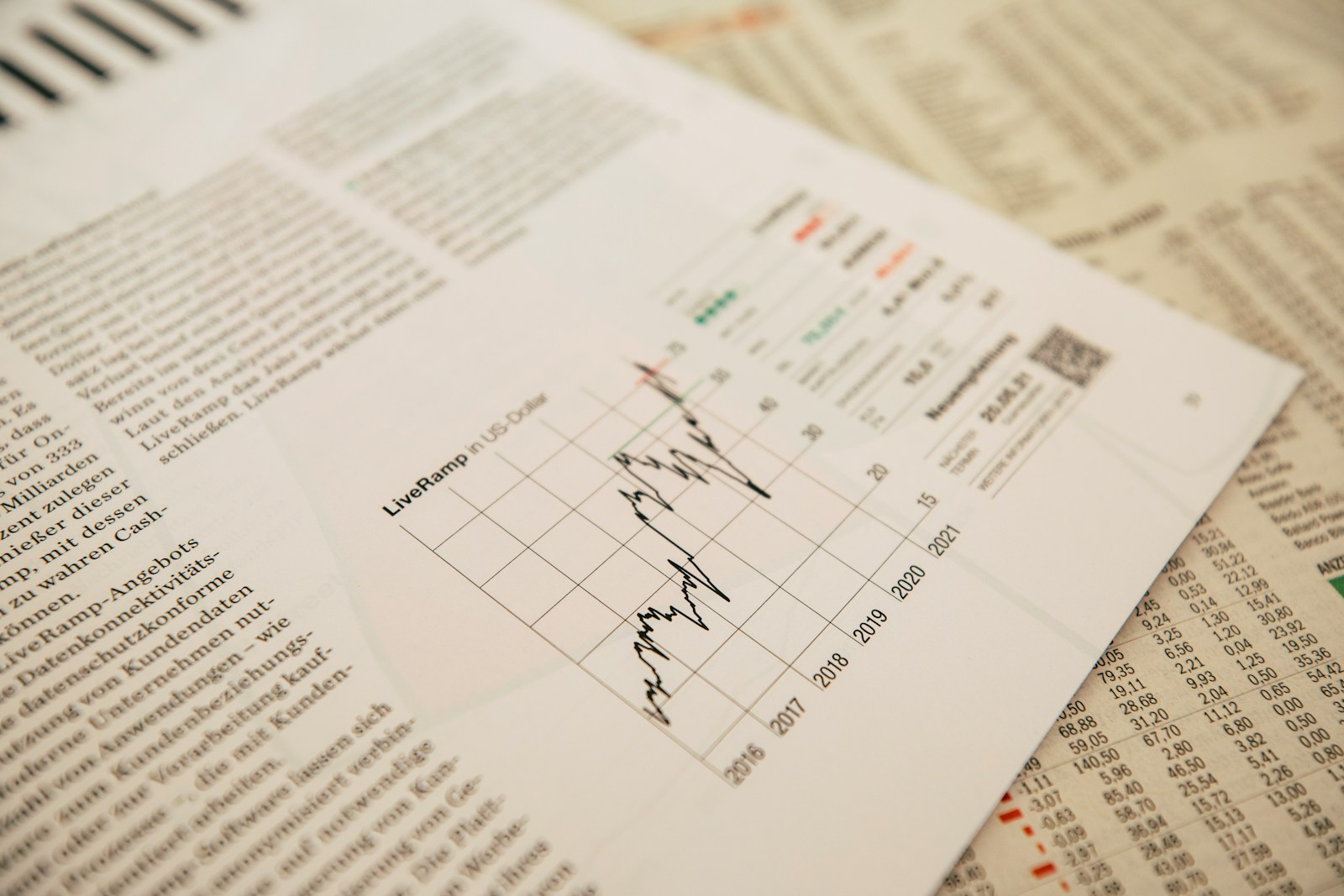-

Company Analysis of Jayaswal Neco Industries Ltd (JAYNECOIND)
Jayaswal Neco Industries Ltd (JNIL) is the flagship company of the NECO Group, commencing its operations in 1976 as a… You must be Subscribed to view this content. Click Here to Subscribe
-

Company Analysis: Paras Defence and Space Technologies Ltd.
Paras Defence and Space Technologies Ltd. (PARAS) is a prominent Indian company specializing in the design, development, manufacturing, and testing… You must be Subscribed to view this content. Click Here to Subscribe
-

Company Analysis: Malu Paper Mills Ltd.
Malu Paper Mills Ltd. (MALUPAPER) is an India-based company operating within the Paper & Paper Products sector. The company is… You must be Subscribed to view this content. Click Here to Subscribe
-

Company Analysis: Oswal Green Tech Ltd.
Oswal Green Tech Ltd., incorporated in 1981, operates in the real estate sector with a secondary focus on investment activities.… You must be Subscribed to view this content. Click Here to Subscribe
-

Secmark Consultancy Ltd: A Company Analysis
Secmark Consultancy Ltd, incorporated in 2011, operates within the IT-Software sector, offering a range of services encompassing consulting, technology, and… You must be Subscribed to view this content. Click Here to Subscribe
-

Company Analysis: Gravita India Limited
Gravita India Limited, established in 1992 and based in Jaipur, India, has grown to become a significant player in the… You must be Subscribed to view this content. Click Here to Subscribe
-

Raghav Productivity Enhancers Ltd. Company Analysis:
Raghav Productivity Enhancers Ltd. (RPEL) is an India-based company primarily engaged in the manufacturing and trading of ramming mass and… You must be Subscribed to view this content. Click Here to Subscribe
-

Company Analysis: B. L. Kashyap And Sons Limited
B. L. Kashyap And Sons Limited (BLKASHYAP) is an Engineering, Procurement, and Construction (EPC) company in India, primarily engaged in… You must be Subscribed to view this content. Click Here to Subscribe
-

Company Analysis: Binani Industries Limited
Binani Industries Limited (BIL) was incorporated in 1962 and operates as a holding company for the Braj Binani Group’s manufacturing… You must be Subscribed to view this content. Click Here to Subscribe
-

Camlin Fine Sciences Limited: Company Analysis
Camlin Fine Sciences Limited (CFS) is a specialty chemicals company engaged in the research, development, manufacturing, and marketing of various… You must be Subscribed to view this content. Click Here to Subscribe
-

Company Analysis: Goldiam International Limited
Goldiam International Limited is an India-based company engaged in the manufacturing and sale of diamond-studded gold, silver, and platinum jewelry.… You must be Subscribed to view this content. Click Here to Subscribe
-

Trejhara Solutions Ltd: Company Analysis
Trejhara Solutions Ltd, incorporated in 2017, operates in the software services and product license business. The company positions itself as… You must be Subscribed to view this content. Click Here to Subscribe
-

Analyzing Jindal Poly Films Ltd.
Analyzing Jindal Poly Films Ltd. (JINDALPOLY) requires a look at its business segments, financial health, and market position. Here’s a… You must be Subscribed to view this content. Click Here to Subscribe
-

Analyzing Uflex Ltd
Analyzing Uflex Ltd. involves considering its position within the flexible packaging industry, its financial performance, and the broader market conditions.… You must be Subscribed to view this content. Click Here to Subscribe
-

Analyzing Orchasp Ltd. (ORCHASP)
Analyzing Orchasp Ltd. (ORCHASP) requires a careful look at its financial health, market position, and future prospects. Here’s a breakdown… You must be Subscribed to view this content. Click Here to Subscribe
-

Analysing Bal Pharma Ltd.
Bal Pharma Ltd. is a pharmaceutical company with a diversified portfolio, engaging in the manufacturing and marketing of both pharmaceutical… You must be Subscribed to view this content. Click Here to Subscribe
-

Analyzing Maral Overseas Ltd. (MARALOVER)
Analyzing Maral Overseas Ltd. (MARALOVER) requires a look at its business operations, financial health, and market position. Here’s a breakdown… You must be Subscribed to view this content. Click Here to Subscribe
-

Analyze Vardhman Textiles Ltd. (VTL)
Alright, let’s analyze Vardhman Textiles Ltd. (VTL) and provide an investment score. Company Overview Vardhman Textiles Ltd. is a prominent… You must be Subscribed to view this content. Click Here to Subscribe
-

Analyzing Power Mech Projects Ltd.
Analyzing Power Mech Projects Ltd. (POWERMECH) requires a look at its core business, financial health, and market position. Here’s a… You must be Subscribed to view this content. Click Here to Subscribe
-

Analyzing Birla Cable Limited
Analyzing Birla Cable Limited requires a look at its core business, financial health, and market position. Here’s a breakdown: Important… You must be Subscribed to view this content. Click Here to Subscribe
-

Analyzing Hester Biosciences Limited
Analyzing Hester Biosciences Limited requires a look at its core business, market position, and financial health. Here’s a breakdown: It’s… You must be Subscribed to view this content. Click Here to Subscribe
-

Analyzing Vodafone Idea Limited
Analyzing Vodafone Idea Limited (formerly Idea Cellular Limited) requires a careful look at its current financial standing and the challenges… You must be Subscribed to view this content. Click Here to Subscribe
-

Analyzing BSE Ltd.
Analyzing BSE Ltd. requires a look at its position within the Indian financial market, its recent performance, and future potential.… You must be Subscribed to view this content. Click Here to Subscribe
-

Analyzing DRC Systems India Ltd
Analyzing DRC Systems India Ltd. requires a look at its business operations, financial health, and market position. Here’s a breakdown:… You must be Subscribed to view this content. Click Here to Subscribe
-

Analyzing Vaishali Pharma Ltd.
Analyzing Vaishali Pharma Ltd. requires a look at its business operations, financial health, and market position. Here’s a breakdown: It’s… You must be Subscribed to view this content. Click Here to Subscribe
-

Analyzing Dangee Dums Ltd
Analyzing Dangee Dums Ltd. requires a careful look at its business model, financial health, and market position. Here’s a breakdown: You must be Subscribed to view this content. Click Here to Subscribe
-

Analyzing Sarthak Metals Ltd
Analyzing Sarthak Metals Ltd. requires a look at its operational scope, financial health, and market positioning. Here’s a breakdown: Disclaimer:… You must be Subscribed to view this content. Click Here to Subscribe
-

Capri Global Capital Limited (CGCL) Analysis
Capri Global Capital Limited (CGCL) is a diversified Non-Banking Financial Company (NBFC) operating in India. Its business spans several key… You must be Subscribed to view this content. Click Here to Subscribe
-

Analyzing Tourism Finance Corporation of India Limited (TFCILTD)
Analyzing Tourism Finance Corporation of India Limited (TFCILTD) requires a look at its core business, financial health, and market position.… You must be Subscribed to view this content. Click Here to Subscribe
-

Vinyl Chemicals (India) Limited Analysis
Company Overview: Vinyl Chemicals (India) Limited (VCIL) operates primarily in the trading of chemicals, with a core focus on Vinyl… You must be Subscribed to view this content. Click Here to Subscribe
-

Mastek Limited Analysis
Mastek Limited is a global enterprise digital and cloud transformation specialist. Established in 1982, the company has evolved significantly, now… You must be Subscribed to view this content. Click Here to Subscribe
-

Analyzing Raymond Limited
Analyzing Raymond Limited requires a look at its diverse business segments and recent strategic shifts. Here’s a breakdown: Investment Score:… You must be Subscribed to view this content. Click Here to Subscribe
-

Analyzing Gulshan Polyols Limited
Analyzing Gulshan Polyols Limited requires a look at its core business, financial health, and market position. The company operates in… You must be Subscribed to view this content. Click Here to Subscribe
-

Analyzing Sindhu Trade Links Ltd.
Analyzing Sindhu Trade Links Ltd. requires a look at its diverse business operations and financial health. Here’s a breakdown: Disclaimer: You must be Subscribed to view this content. Click Here to Subscribe
-

Analyzing T T Limited
Analyzing T T Limited requires a look at its diverse operations and financial health. Here’s a breakdown: Investment Score: Important… You must be Subscribed to view this content. Click Here to Subscribe
-

Analyzing Uttam Sugar Mills Limited
Analyzing Uttam Sugar Mills Limited requires a look at its core business, financial health, and market position. Here’s a breakdown:… You must be Subscribed to view this content. Click Here to Subscribe
-

Annualized Returns vs. Year-by-Year Returns in the Stock Market: Understanding the Difference
Written by Guest Writer When analyzing stock market performance, two key metrics often come up: annualized returns and year-by-year returns. While both help investors evaluate how a stock or an index has performed over time, they serve different purposes and can lead to different interpretations. In this article, we will break down these concepts, explain…
-

Analyzing One MobiKwik Systems Ltd.
Analyzing One MobiKwik Systems Ltd. requires a look at its position within India’s rapidly evolving digital financial services landscape. The… You must be Subscribed to view this content. Click Here to Subscribe
-

Analyzing Gandhi Special Tubes Limited
It’s crucial to remember that this analysis is based on publicly available information and should not be considered financial advice.… You must be Subscribed to view this content. Click Here to Subscribe
-

Analysis of NACL Industries Ltd
Company Overview: NACL Industries Ltd. is a prominent agrochemical company in India, operating in the crop protection sector. Their business… You must be Subscribed to view this content. Click Here to Subscribe
-

Hitech Corporation Ltd. Analysis
Company Overview Hitech Corporation Ltd. requires a look at its core business, financial health, and market position. The company specializes… You must be Subscribed to view this content. Click Here to Subscribe
-

Risk Mitigation for FD, Debt, Gold, and Equity Investments
Investing is about balancing risk and reward. Whether you invest in Fixed Deposits (FDs), Debt Instruments, Gold, or Equities, each… You must be Subscribed to view this content. Click Here to Subscribe
-

Lorentzian Classification Indicator in TradingView: A Machine Learning Approach to Trading
Introduction The Lorentzian Classification Indicator in TradingView is an advanced machine learning-based tool that leverages the Lorentzian Distance Classifier (LDC)… You must be Subscribed to view this content. Click Here to Subscribe
-

Tata Teleservices (Maharashtra) Ltd. (TTML) Analysis
Company Overview TTML is a leading telecom operator in the Indian state of Maharashtra. It provides a range of telecommunication… You must be Subscribed to view this content. Click Here to Subscribe
-

Apollo Tyres Limited ANALYSIS
Company Overview Apollo Tyres Limited is a leading multinational tire manufacturing company headquartered in Gurugram, Haryana, India. Established in 1972,… You must be Subscribed to view this content. Click Here to Subscribe
-

Shiva Texyarn Limited (SHIVATEX) Analysis
Company Overview Shiva Texyarn Limited is an Indian textile manufacturing company engaged in the production of yarn, fabrics, garments, and… You must be Subscribed to view this content. Click Here to Subscribe
-

Mahindra EPC Irrigation Limited (MAHEPC) Analysis
Company Overview: Mahindra EPC Irrigation Limited is a leading player in the micro-irrigation industry in India. The company manufactures and… You must be Subscribed to view this content. Click Here to Subscribe
-

Cubex Tubings Limited Analysis
Company Overview Cubex Tubings Limited is an Indian company engaged in the manufacturing of seamless solid drawn tubes, rods, bus… You must be Subscribed to view this content. Click Here to Subscribe
-

Kirloskar Brothers Limited (KIRLOSBROS) Analysis
Company Overview Kirloskar Brothers Limited is a leading Indian engineering and manufacturing company specializing in fluid management solutions. Established in… You must be Subscribed to view this content. Click Here to Subscribe
-

Rama Phosphates Limited Analysis
Company Overview Rama Phosphates Limited is a leading manufacturer of phosphatic fertilizers, primarily Single Super Phosphate (SSP), in India. The… You must be Subscribed to view this content. Click Here to Subscribe
-

Spandana Sphoorty Financial Ltd Analysis
Company Overview: Spandana Sphoorty Financial Ltd. is a leading microfinance institution (MFI) in India, primarily focused on providing small loans… You must be Subscribed to view this content. Click Here to Subscribe
-

ITI Limited Analysis (06-01-2025)
Company Overview ITI Limited is an India-based public sector undertaking specializing in the manufacturing, trading, and servicing of telecommunication equipment.… You must be Subscribed to view this content. Click Here to Subscribe
-

Apollo Sindoori Hotels Limited Analysis
Company Overview: Apollo Sindoori Hotels Limited operates in the hospitality sector, primarily focusing on budget and mid-range hotels. The company… You must be Subscribed to view this content. Click Here to Subscribe
-

Prozone Realty Limited Analysis
Company Overview Prozone Realty Limited is a leading real estate developer in India, primarily focused on developing, owning, and operating… You must be Subscribed to view this content. Click Here to Subscribe
-

3i Infotech Ltd Analysis
Company Overview: 3i Infotech Ltd. is an IT services company that provides a range of solutions, including digital transformation, cloud… You must be Subscribed to view this content. Click Here to Subscribe
-

KIOCL Limited Analysis
Company Overview KIOCL Limited (KIOCL) is a leading producer of iron ore pellets in India. The company plays a crucial… You must be Subscribed to view this content. Click Here to Subscribe
-

Worth Peripherals Limited (WORTH) Analysis
Company Overview Worth Peripherals Limited is an Indian company engaged in the manufacturing and distribution of paper and paper products.… You must be Subscribed to view this content. Click Here to Subscribe
-

KEI Industries Limited Analysis
Company Overview KEI Industries Limited is a leading manufacturer of wires and cables in India, offering a wide range of… You must be Subscribed to view this content. Click Here to Subscribe
-

Understanding L1, L2, and L3 Data in the Indian Stock Market
The Indian stock market, one of the most dynamic and rapidly evolving markets in the world, is a treasure trove… You must be Subscribed to view this content. Click Here to Subscribe
-

Sundaram Brake Linings Limited (SUNDRMBRAK) Analysis
Company Overview Sundaram Brake Linings Limited is a leading manufacturer of friction materials for the automotive industry in India. The… You must be Subscribed to view this content. Click Here to Subscribe
-

Kohinoor Foods Limited Analysis
Company Overview Kohinoor Foods Limited is a prominent player in the Indian food processing industry, specializing in the production and… You must be Subscribed to view this content. Click Here to Subscribe
-

Amines & Plasticizers Limited (APL) Analysis
Company Overview Amines & Plasticizers Limited (APL) is a leading Indian manufacturer of organic chemicals, specializing in ethanolamines, alkyl alkanolamines,… You must be Subscribed to view this content. Click Here to Subscribe
-

Kothari Products Limited Analysis
Company Overview Kothari Products Limited is a diversified company primarily engaged in the manufacturing and trading of textile machinery spare… You must be Subscribed to view this content. Click Here to Subscribe
-

Orissa Minerals Development Company Limited (ORISSAMINE) Analysis
Company Overview Orissa Minerals Development Company Limited (OMDC) is a mining company primarily engaged in the exploration, mining, beneficiation, and… You must be Subscribed to view this content. Click Here to Subscribe
-

Bajaj Healthcare Ltd Analysis
Company Overview Bajaj Healthcare Ltd. is a pharmaceutical company engaged in the manufacturing and marketing of Active Pharmaceutical Ingredients (APIs),… You must be Subscribed to view this content. Click Here to Subscribe
-

Fairchem Organics Limited Analysis
Company Overview Fairchem Organics Limited is a leading manufacturer and exporter of specialty chemicals, catering to various industries like agrochemicals,… You must be Subscribed to view this content. Click Here to Subscribe
-

Airo Lam Limited Analysis
Company Overview Airo Lam Limited is a leading manufacturer of decorative laminates in India. The company caters to various industries,… You must be Subscribed to view this content. Click Here to Subscribe
-

Bajel Projects Limited Analysis
Company Overview Bajel Projects Limited is a leading company in the business of power infrastructure, with a focus on transmission… You must be Subscribed to view this content. Click Here to Subscribe
-

Laxmi Goldorna House Ltd Analysis
Company Overview Laxmi Goldorna House Ltd. is primarily engaged in the construction and real estate industry. The company is involved… You must be Subscribed to view this content. Click Here to Subscribe
-

Lambodhara Textiles Limited Analysis
Company Overview Lambodhara Textiles Limited is a leading player in the textile industry, specializing in the manufacturing and export of… You must be Subscribed to view this content. Click Here to Subscribe
-

ITI Limited Analysis
Company Overview ITI Limited is a state-owned manufacturing company in India, primarily involved in telecommunications and defense electronics. The company… You must be Subscribed to view this content. Click Here to Subscribe
-

Indo US Bio-Tech Ltd Analysis
Company Overview Indo US Bio-Tech Ltd. is a pharmaceutical company engaged in manufacturing and marketing a wide range of pharmaceutical… You must be Subscribed to view this content. Click Here to Subscribe
-

Mahalaxmi Rubtech Limited (MRTL) Analysis
Company Overview Mahalaxmi Rubtech Limited (MRTL) is a leading manufacturer of technical textiles and specialty chemicals in India. The company… You must be Subscribed to view this content. Click Here to Subscribe
-

Orbit Exports Limited Analysis
Company Overview Orbit Exports Limited is a leading player in the textile industry, specializing in the manufacturing and export of… You must be Subscribed to view this content. Click Here to Subscribe
-

Aditya Birla Money Limited Analysis
Company Overview Aditya Birla Money Limited (ABML) is a financial services company that offers a range of financial products and services, including mutual funds, insurance, loans, and investment advisory services. It is a subsidiary of Aditya Birla Capital Limited, a diversified financial services group. Financial Analysis Key Strengths Key Risks Investable Score: 7/10 Our Analysis:…
-

Quantitative Research on RSI and Volume-Based Trading: Execution and Profitability Analysis
Abstract This research examines the effectiveness of combining the Relative Strength Index (RSI) and volume as a trading strategy. Using… You must be Subscribed to view this content. Click Here to Subscribe
-

Landmark Property Development Company Limited Analysis
Company Overview Landmark Property Development Company Limited is primarily engaged in real estate development and construction activities. The company focuses… You must be Subscribed to view this content. Click Here to Subscribe
-

Ind-Swift Laboratories Ltd Company Analysis
Company Overview Ind-Swift Limited is a pharmaceutical company engaged in the manufacturing, marketing, and distribution of a wide range of… You must be Subscribed to view this content. Click Here to Subscribe
-

Rajdarshan Industries Limited Company Analysis
Company Overview Rajdarshan Industries Limited is primarily engaged in the manufacturing and trading of iron and steel products, and allied… You must be Subscribed to view this content. Click Here to Subscribe
-

Art Nirman Limited Company Analysis
Company Overview Art Nirman Limited is a construction company primarily engaged in the execution of civil construction projects. The company’s… You must be Subscribed to view this content. Click Here to Subscribe
-

Umang Dairies Limited Company Analysis
Company Overview Umang Dairies Limited is a dairy products company primarily engaged in the manufacturing, processing, and marketing of milk… You must be Subscribed to view this content. Click Here to Subscribe
-

Kridhan Infra Limited Company Analysis
Company Overview Kridhan Infra Limited is primarily engaged in the manufacture, trade, and distribution of iron and steel products, and… You must be Subscribed to view this content. Click Here to Subscribe
-

Understanding Conditional Risk-Neutral PDEs in Portfolio Management
In the ever-evolving landscape of finance, effective risk management is paramount for investors and portfolio managers. A recent advancement in this field is the introduction of a closed-form formula for the conditional probability of a portfolio, which is based on optimal common drivers. This innovative approach leverages Gaussian copulas to model joint distributions, leading to…
-

The Impact of Social Media on Cryptocurrency Trading: Analyzing Twitter’s Influence
In the rapidly evolving world of cryptocurrency, the ability to predict price movements is crucial for traders seeking to maximize… You must be Subscribed to view this content. Click Here to Subscribe
-

Transforming Portfolio Optimization for the Indian Stock Market with Advanced Models
Portfolio optimization is critical for achieving superior returns in India’s dynamic stock market. Leveraging advanced statistical models like Generalized Additive… You must be Subscribed to view this content. Click Here to Subscribe
-

Companies/Stocks on our Radar December 2024
This is not any kind of Buy or Sell recommendation. The list is based on our research on AI/ML Algo… You must be Subscribed to view this content. Click Here to Subscribe
-

Ola Electric
Company Overview Ola Electric, a subsidiary of the ride-hailing giant Ola, is a relatively new entrant in the electric vehicle… You must be Subscribed to view this content. Click Here to Subscribe


